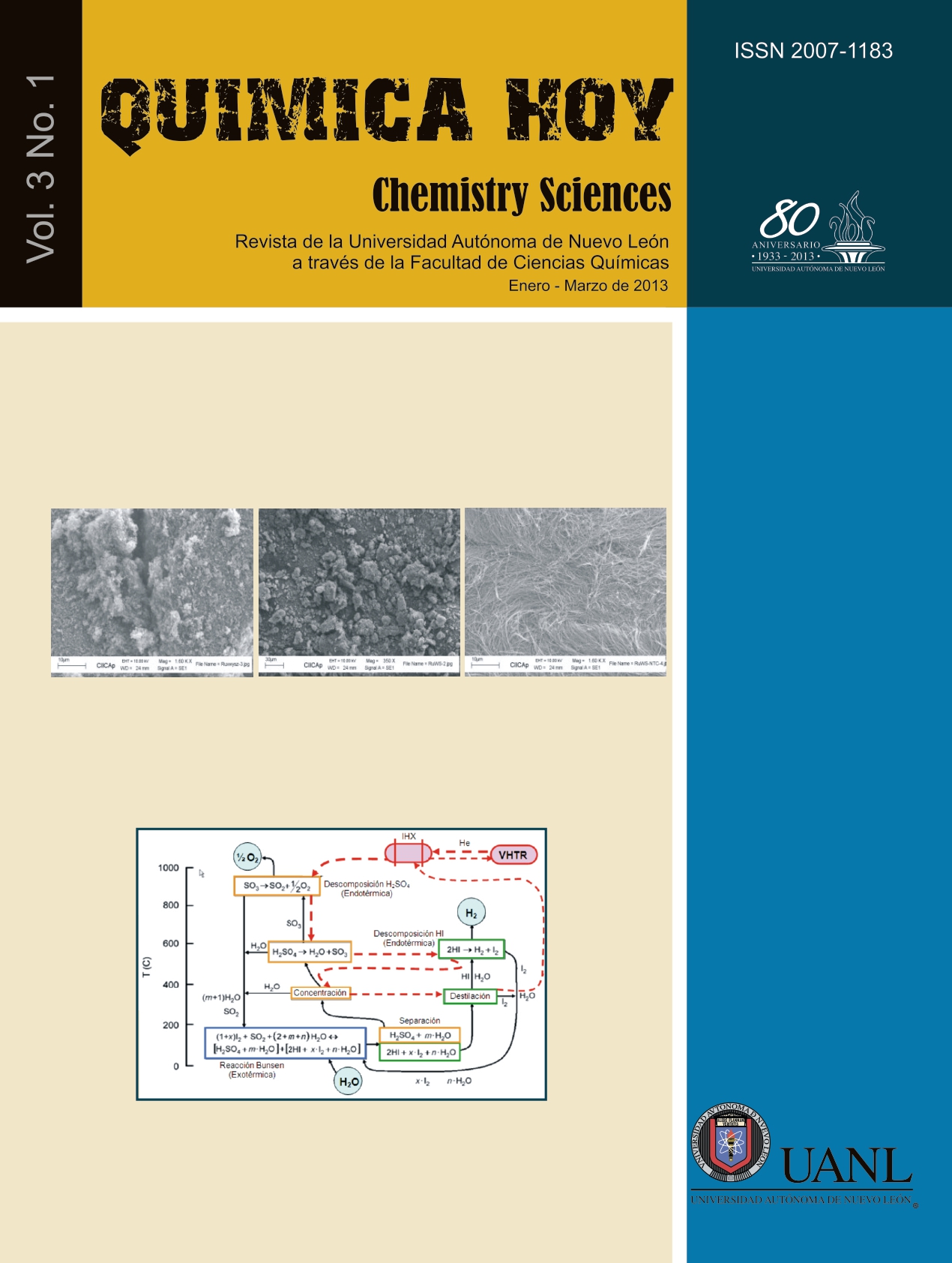Organ-dependent GST activation in Ocimum basilicum by endosulfan exposure
DOI:
https://doi.org/10.29105/qh3.1-164Palabras clave:
Phytoremediation, Endosulfan, Ocimum basilicum, plant GSTResumen
Ocimum basilicum L., Basil, has shown to be a bioremediator candidate for the organochlorine pesticide endosulfan.
Nevertheless, the mechanism ofphytoremediation ofthe pesticide is still unknown. Glutathione-S-Transferase (GST) is an
enzyme involved in plant defense against pollutants and oxidative damage. Because of this, GST activity changes would
be expected after an exposition to endosulfan. Thus, to evaluate the response of basil to endosulfan exposure, we
measured GST activity in leaves, roots, stems and rhizosphere. Plants were exposed to O, 10, 100, 1000 mg endosulfan/Kg
of soil. Toe GST activity increased after endosulfan exposure depends on organ and endosulfan concentration. In leaves,
GST activity increased at 10 mg/Kg, but decreased at 1000 mg/Kg. Root GST activity was increased at 10 mg/Kg, but
became normal at higher concentrations of endosulfan. GST activity from stem and rhizosphere showed no significant
variation with the endosulfan concentration.
Descargas
Citas
-[1] Dixon D.P., Lapthom A., Edwards R., Plant glutathione transferases. Review. Genome Biology 3.2002, 3, 1-10.
-[2] Environment Protection Agency (EPA) A Citizen's Guide to Phytoremediation. 542-F-01-002 (2001).
-[3] Habig W.H. & Jakoby, W.B. Assays for differentiation of glutathione S- transferases. Methods Enzymol. 1981, 77, 398-405. DOI: https://doi.org/10.1016/S0076-6879(81)77053-8
-[4] Hatton P.J., Cummins l., Cole D.J., Edwards R.. Glutathione transferases involved in herbicide detoxification in the leaves of Setaria faberi (giant foxtail). Physiologia Plantarum. 1999, 105, 9-16. DOI: https://doi.org/10.1034/j.1399-3054.1999.105103.x
-[5] Ramírez-Sandoval M., Melchor-Partida G.N., MuñizHemández S., Girón-Pérez M.I., Rojas-García A.E., Medina-Díaz M., Robledo-Marenco M.L., VelázquezFernández J.B. Phytoremediatory effect and growth of two species of Ocimum in endosulfan polluted soil. J Hazard Material. 2011, 192, 388-392. DOI: https://doi.org/10.1016/j.jhazmat.2011.05.041
-[6] Scarponi L., Quagliarini E., Del Buono D. Induction of wheat and maize glutathione S-transferase by sorne herbicide safeners and their effect on enzyme activity against butachlor and terbuthylazine. Pest. Manag. Sci. 2006, 62, 927-32. DOI: https://doi.org/10.1002/ps.1258
-[7] Shcroder P., Scheer C.E., Diekmann F., Stampfl A. How plants cope with foreign compounds: Translocation of xenobiotic glutathione conjugates in roots of barley (Hordeum vulgare). Env. Sci. Pollut. Res . 2007, 14(2), 114-122. DOI: https://doi.org/10.1065/espr2006.10.352
-[8] Yadav R., Arora P., Kumar S, Chaudhury A. Perspectives for genetic engineering of poplars for enhanced phytoremediation abilities. Ecotoxicology. 2010, 19(8), 1574-1588. DOI: https://doi.org/10.1007/s10646-010-0543-7
Descargas
Publicado
Cómo citar
Número
Sección
Licencia
Derechos de autor 2013 Maricela Ramírez Sandoval , Jesús Bernardino Velázquez Fernández

Esta obra está bajo una licencia internacional Creative Commons Atribución 4.0.





